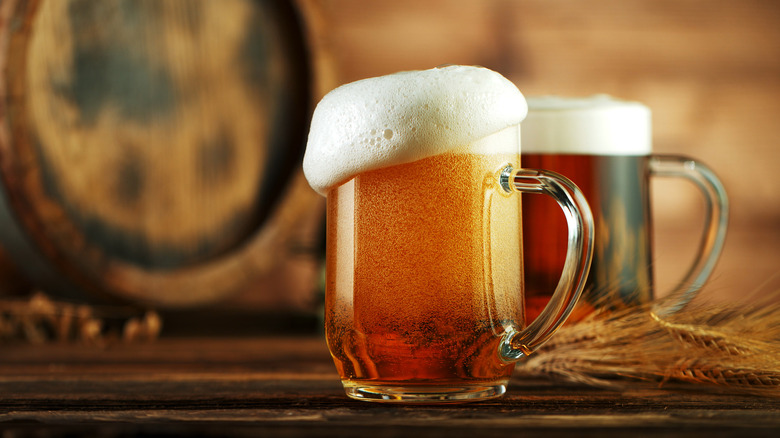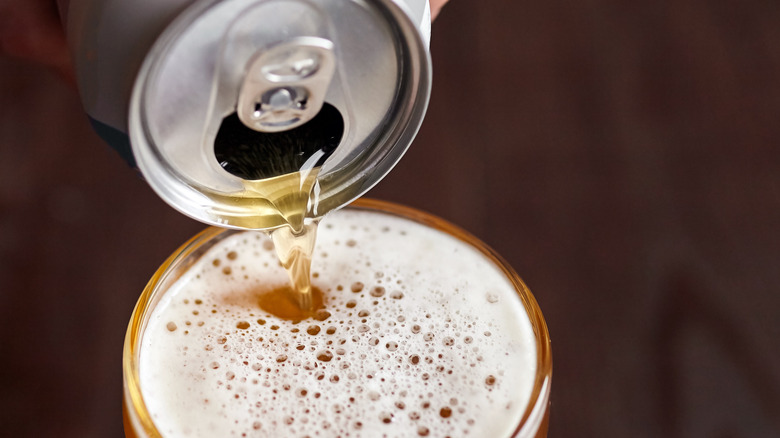What Makes Beer Foam? The Science Explained
Ah ... beer. That cold, foamy, malty stuff that's perfect for clanging together in tankards that slosh. Or, if you prefer, the small-batch microbrewed stuff that lots of brewers now swear ought to be packaged and stored in cans, not bottles. Why? As Brew-School says, light penetrates glass and mucks up beer's flavor. Plus, aluminum is an inert material that won't exchange molecules with beer over time and alter its flavor. Who knew chemistry could taste so great?
Speaking of chemistry, beer, and education: head. Or foam. That stuff on the top of your beer that you sip away and that bartenders try so, so hard to prevent from forming by tilting your glass as they pull a pint. Where does it come from? Why dost thou spume so? Some folks think it's merely carbonation or temperature differences between cold and hot environments. But soda doesn't foam like beer — the most it does is erupt if you shake a can because shaking causes gas to escape from the liquid. That kind of foam fizzles away almost immediately, anyway. Beer foam stays put like a flotation device.
As it turns out, one of beer's key ingredients, barley, produces a protein that's hydrophobic (dislikes water). This is ironic considering that upwards of 95% of beer is water, its chief ingredient, per Wine Enthusiast Magazine. As a result, this water-hating protein — Lipid Transfer Protein 1 (LTP1) — binds with rising carbon dioxide (CO2) and rides it up to the surface, Craft Beer explains.
Clinging to CO2 escape pods
The precise science behind how LTP1 forms and operates — nucleation — is actually still unclear, as Craft Beer explains. This is amazing considering that humans have had at least an 11,000-year-old relationship with beer, as giant beer cisterns have been found at the ancient site Gobekli Tepe in modern-day Turkey, per Tepe Telegrams. We do know that LTP1 is a "non-specific lipid-transfer" protein that transfers "phospholipids as well as galactolipids across membranes," per UniProt. Meaning, it's a part of the waxy cellular material of plants that crosses cell membranes to carry molecules from place to place.
Other factors play a role in the "quality, texture and retention" of a beer's foam, particularly its original crop of barley, Craft Beer reports. The publication also notes that hops make the foam more "ridged, stable and clingy," as their iso-alpha acids — the chemical that makes hops taste bitter — link with LTP1 molecules. Higher alcohol content impacts foam creation, too. Above 1 percent alcohol-by-volume (ABV), the ethanol in beer better stems the rising froth. All in all, this means that a high ABV beer will likely have less foam.
The exception here is beers that contain nitrogen instead of CO2, like Guinness and other porters or stouts. As Craft Beer explains, nitrogen operates under different chemical rules and creates a very different texture of foam. Some breweries even experiment with nitrogen-CO2 mixtures. In the end, don't shun the foam — embrace it, and cheers.

